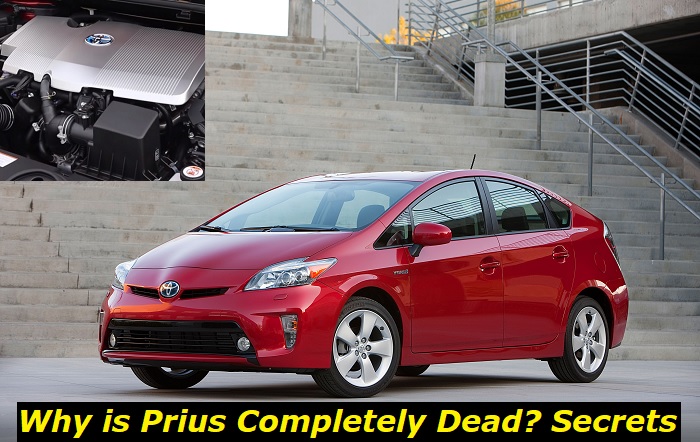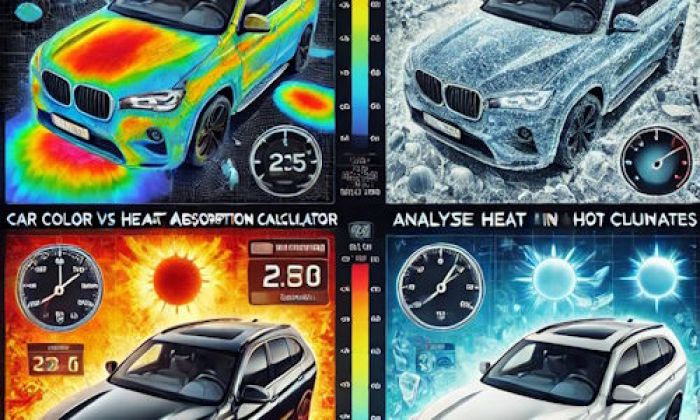In 1995, multinational automotive company Toyota started conceptualizing a hybrid concept car and made an exhibit at the Tokyo Motor Show. On December 10, 1997, the original Prius, model NHW10, started going on sale. A few years later, the model became one of the most sought-after cars in the world and the first hybrid vehicle sold in mass production.
The hybrid drivetrain of the Toyota Prius combines an internal combustion engine and an electric motor. Based on smog-forming emissions, the California Air Resources Board (CARB) and Environmental Protection Agency (EPA) rated the Prius as one of the cleanest cars sold in the United States in 2007.

With Japan and the US being its two biggest markets, Toyota sells the Prius in over 90 countries. With nearly 4 million units sold up to 2017, the Prius liftback was the most popular hybrid vehicle worldwide. In January 2017, the Prius family had cumulative global sales of 6.1 million units, or 61% of the 10 million hybrids Toyota has sold globally since 1997.
A Toyota Prius is a solid choice if you're looking for an electric vehicle. Its model years all have something great to offer, from fantastic fuel economy to top-notch safety ratings. Experts estimate that it will only lose 27-40% of its value when sold in five years, which is a good resale value.
Like most high-end vehicles, the Prius is not exempted from wearing and tearing. As mileage increases, its engine, battery, and other vital components experience different issues and problems. One question you might have asked is, what happens if your Prius becomes dead? Can you still revive and use the car? Learn more about this revolutionary vehicle first to see if issues happening to this car have convenient solutions.
Specifications of a Prius
Its engine displacement is 1798 cc. It has four cylinders and a maximum torque of 142Nm@3600rpm. The fuel type of the Toyota Prius is petrol, and its fuel tank capacity is 43 liters. The unladen ground clearance is 135mm, while the boot space is 502 liters. The most important feature is the 56-mpg combined mileage which is shockingly high even today.
The other key features of a Prius include power steering and an anti-lock braking system. Like other cars, it's equipped with driver and passenger airbags and other safety features. The Prius also has automatic climate control.
Design and Technology of Prius
The Prius is a power-split or series-parallel (full) hybrid, also known as a combined hybrid. This means it can run on either gasoline or electricity or both. It includes the Kammback automotive styling element to lessen air resistance. Road friction is decreased by using tires with lower rolling resistance. Serpentine belts are eliminated by an electric water pump.
The electric motor is immediately operational when the "Power" button is pressed, enabling the vehicle to be driven. A few seconds pass between turning the car on and the internal combustion engine firing up. After turning the vehicle on and in the majority of low-load situations when traveling at less than 25 mph, a button marked "EV" keeps it in electric vehicle mode.
Prius has two batteries: a 12-volt battery known as the low voltage battery and a high voltage battery pack that is also referred to as the traction battery. Some studies suggested that the battery life cycle of Prius reached over 200,000 miles.
Indications That Your Prius is Dead or Dying
There are indicators of a dying Prius battery that you should watch out for, regardless of the drive system. Even hybrid models have a few red flags that show as the car gets old. If you notice things like lower gas mileage or the gas-powered engine not working as smoothly as it should be, have your battery inspected to avoid future inconveniences.
Other symptoms of a battery dying are charge fluctuations and sudden drops in the battery bar. If your vehicle lights are dimmer than usual when you turn them on without motor assistance, your battery might be having issues, too. If your Prius doesn't start after a few tries, have the car checked at your nearest mechanic shop.
Avoiding using the automatic headlight feature is one way to avoid a dead battery. Every time you get out of the car, manually turn them off. When you get back in to resume driving, manually turn them on.
Some criticize this as being outdated and disapprove of the solution. If you're one of them, remember that your lights could stay on if something goes wrong in the parking lot or at home.
The majority of people aren't even aware of the actions they took that resulted in the lights turning on and the subsequent battery drain. They might even do it again. However, you'll pay closer attention once you understand how disrupting your routine, like turning on the auto lights, can save you so much money and trouble.
Possible Reasons for a Dead Prius
One possible reason for a dead Prius could be that the battery is being drained while the car is stationary. Also, the battery might have a critically low capacity. If your battery is not charging while you're driving, your car will keep on dying until damaging the battery eventually. If the battery terminals are loose, your battery will also experience recurring problems.
If your Prius has a push-button start/stop feature, a weak key fob battery may be intercepting your car's startup. You can still start your car without a problem because the battery only serves to transmit the signal for locking and unlocking. The door no longer locks or unlocks with the push of a button if the key fob battery is dead. The immobilizer is then controlled by a passive transponder, and the doors must be manually opened.
The fuel filter in your Prius clogs over time from dirt and airborne particles rather than wearing out as a mechanical part would. Both the fuel pressure and the filter's permeability decrease. The engine will no longer operate at peak efficiency and, in some cases, may not even start if the fuel filter is too dirty. There is no way to clean it; the only option is to change the filter.
The engine of your Prius won't start if the fuel pump malfunctions. The pump typically makes sure that the proper volume of fuel is transferred under enough pressure from the tank to the engine's injection. Before your fuel pump fails, the problem typically becomes apparent.
You should have your pump checked if your car's engine occasionally fails, the vehicle is challenging to start, the engine jerks slightly, or the engine performance declines. This could be caused by pump wear or contamination. The fuel pump is typically also apparent before failure if the pump is leaking, a power contact is broken, or a line or a pump lever is broken. A damaged fuel pump can be changed in your workshop.
Rarely, your Prius' malfunction could also be caused by a blown fuse. Verify all things in the fuse box that are required to start the engine. However, exercise caution if you decide to assist with the fuse box yourself! Repairs and tests should always be carried out in a workshop because the box is powered.
Fixing a Dead or Faulty Prius
With your car parked and your engines off, try jumpstarting your car to see if it's completely dead or not. Look underneath the fuse box cover by opening the hood of your car. You can find the jump start terminal there. After that, join the red positive jumper cable to your car's positive terminal. Next, attach the second red positive cable to the assisting vehicle's positive battery terminal.
Fasten the black negative cable to the opposing vehicle's negative battery terminal. Attach the other negative clamp to the metal frame of the vehicle. Your chosen portion of the frame should be immovable and unpainted. The assisting vehicle's engine should be started, and it should get going for five minutes.
Before starting your Prius, flip the power switch to "ON." Watch for the "Ready" indicator light. In the reverse order of their original connection, unplug the jumper cables. You will also need some idea on Prius battery charging. Enable your Prius to operate for up to 10 minutes after removing the jumper cables before turning them off once more. This enables the battery to recharge and keeps the car from experiencing starting problems.
Conclusion
Battery replacement is advised by Toyota once the battery is dead. Cleaning your battery terminals is one action you can take to keep your battery fully charged and even extend its lifespan. Compared to a battery that has been well-maintained with a peak charge, a battery that has been fully discharged and then recharged is much more likely to fail quickly.
About the authors
The CarAraC research team is composed of seasoned auto mechanics and automotive industry professionals, including individuals with advanced degrees and certifications in their field. Our team members boast prestigious credentials, reflecting their extensive knowledge and skills. These qualifications include: IMI: Institute of the Motor Industry, ASE-Certified Master Automobile Technicians; Coventry University, Graduate of MA in Automotive Journalism; Politecnico di Torino, Italy, MS Automotive Engineering; Ss. Cyril and Methodius University in Skopje, Mechanical University in Skopje; TOC Automotive College; DHA Suffa University, Department of Mechanical Engineering






Add comment